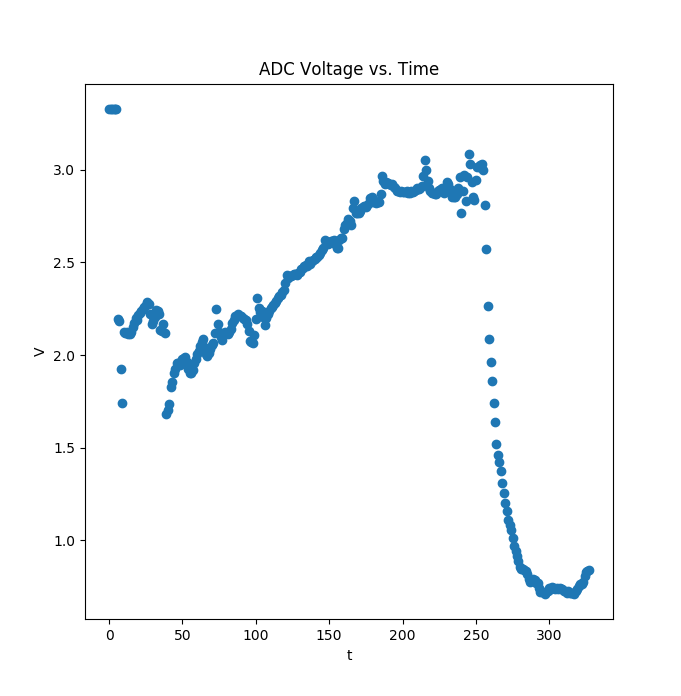Two biofeedback sensors I can probably get working faster than the EEG are hand temperature and galvinic skin response. Hand temperature biofeedback is mostly used to train relaxation. Adrenaline restricts bloodflow to the skin and hands, so by training yourself to warm your hands you can learn to reduce adrenaline levels. Galvinic skin response is similar. People sweat more when nervous, filling sweat ducts with sweat. This is most pronounced on the hands and feet. Sweating reduces skin resistance by providing a conductive channel into the skin. This effect happens in seconds, and is used in polygraphs to detect lies.
For the most part, the resistance inside the body is low enough not to matter when measuring galvinic skin response. The simplest way to measure skin resistance is to put a current through two electrodes in contact with the skin and measure the voltage difference. This is usually done with electrodes on the index and ring fingers.
(For much more detail on measuring galvinic skin response, see Electrodermal Activity by Wolfram Boucsein)
While high temperature measurements usually use thermocouples, the easiest way to measure hand temperature is by using thermistors. The thermistors linked go between about 80k-100k Ohms around 70-100F. They are incredibly small, which gives them really fast response times and makes it easy to keep them around skin temperature.
For measuring each of these resistances, I constructed voltage bridges with instrumentation amplifiers to increase the voltage range. I then used the integrated ADCs in the Nucleo microcontroller I have to measure the voltage.

See https://github.com/garthwhelan/Nucleo-ADC/tree/master for example which reads the ADC 10 times a second and communicates it to a python program on a host which plots the output.


Like the EEG project, actually having a wearable probe is difficult. For GSR, I used the following copper coils:

I also tried mounting the thermistors in sections of pipe which I could use as GSR electrodes. While it looks neat, I think it will require rings which fit better.
